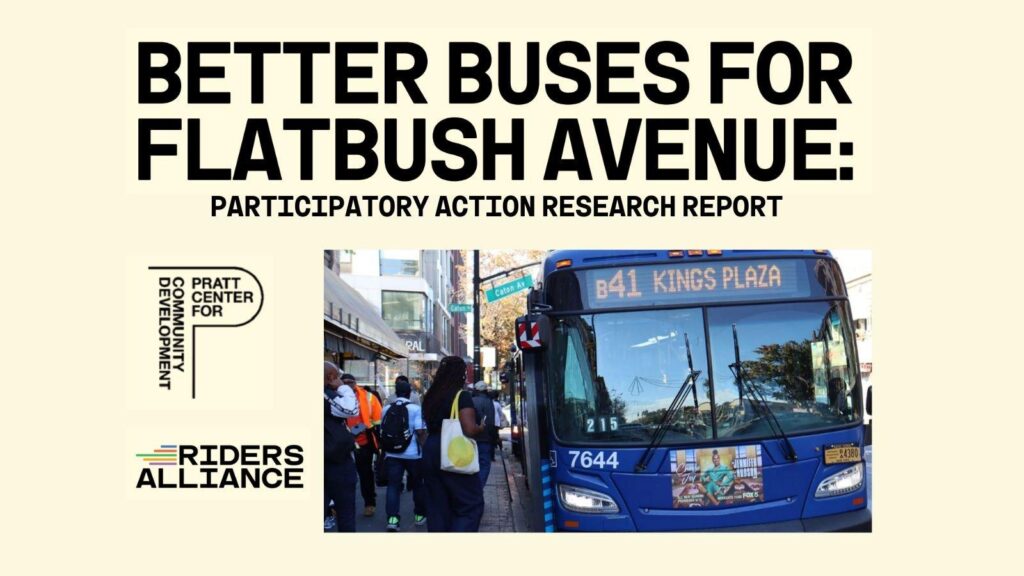Transforming Flatbush Bus Transit: A Call for Real Change
Persistent Transit Struggles in Flatbush Undermine Daily Life
For many years, residents of Flatbush, Brooklyn, have contended with chronic public transportation issues that disrupt their routines and limit access to vital services. Overcrowded buses, erratic schedules, and frequent delays have become commonplace, leaving thousands of commuters frustrated and stranded. These transit shortcomings not only inconvenience individuals but also stifle local economic growth and widen social disparities. Despite numerous commitments from city officials, including Mayor Eric Adams, the neighborhood’s transit system continues to suffer from inadequate funding and operational inefficiencies.
Local advocates highlight several urgent improvements needed to restore reliable service:
- Increased bus frequency throughout the day, including off-peak hours
- Implementation of dedicated bus lanes to enhance speed and dependability
- Clear, timely communication regarding service changes and delays
- Upgraded, accessible, and secure bus stops for all passengers
| Challenge | Consequences | Proposed Solution |
|---|---|---|
| Bus Overcrowding | Extended boarding times, passenger discomfort | Expand bus fleet capacity |
| Frequent Delays | Missed connections, unreliable schedules | Establish exclusive bus lanes |
| Insufficient Communication | Confusion and rider dissatisfaction | Deploy real-time updates via mobile platforms |
Mayor Adams Under Growing Pressure to Enhance Bus Service Reliability
Brooklyn’s Flatbush neighborhood continues to experience significant transit disruptions, with bus delays and cancellations frustrating daily commuters. Despite repeated assurances from Mayor Adams’ office, the reliability of bus services remains a critical concern. Riders frequently encounter packed buses, inconsistent schedules, and a lack of timely information, eroding trust in the city’s public transportation system. These issues not only disrupt daily life but also hinder access to jobs, education, and healthcare.
Community leaders stress the importance of addressing the following priorities immediately:
- Rigorous fleet maintenance: Ensuring buses are well-maintained to minimize breakdowns and service gaps.
- Boosted service frequency during rush hours: Adding more buses to meet demand and reduce crowding.
- Enhanced real-time communication: Offering accurate updates through digital signage and smartphone apps.
- Creation of dedicated bus lanes: Protecting buses from traffic congestion to improve punctuality.
| Performance Metric | Current Level | Target Objective |
|---|---|---|
| Average Bus Delay | 15 minutes | 5 minutes |
| On-Time Bus Arrival Rate | 65% | 90% |
| Rider Satisfaction | 40% | 75% |
Building Infrastructure for Fair and Efficient Transit
Addressing Flatbush’s transit woes requires substantial investment in infrastructure that promotes equitable access and safety. Prioritizing dedicated bus lanes, modernized shelters, and traffic signal prioritization can transform the commuter experience from one of uncertainty to reliability. These enhancements not only reduce travel times but also mitigate safety hazards linked to overcrowded stops and inadequate pedestrian access.
Key infrastructure upgrades recommended include:
- Installation of real-time arrival information displays at bus stops
- Improved lighting and security measures to ensure safe waiting environments, especially during late hours
- Expanded sidewalks and accessible curb ramps to accommodate riders with disabilities
- Modernization of bus depots to support more frequent and well-maintained vehicles
| Infrastructure Component | Expected Benefit | Projected Completion |
|---|---|---|
| Dedicated Bus Lanes | Cut delays by up to 30% | 1-2 years |
| Real-Time Arrival Displays | Boost rider confidence and reduce uncertainty | 6-12 months |
| Bus Stop Safety Enhancements | Decrease accidents and improve waiting conditions | 1 year |
Mayor Adams must acknowledge that without these focused investments, the vision of improved transit for Flatbush remains unattainable. Achieving transportation equity demands a commitment to infrastructure that prioritizes safety, accessibility, and dignity for all riders—not just those in wealthier neighborhoods. This approach lays the groundwork for a truly inclusive transit system.
Policy Innovation and Community Involvement: Cornerstones of Sustainable Progress
Lasting improvements for Flatbush’s bus riders depend on comprehensive policy reforms coupled with meaningful community participation. Without a strategic overhaul that centers on equitable service and accountability, residents will continue to endure long waits and unpredictable travel times. Emphasis should be placed on increased funding for neighborhood routes, expansion of bus priority lanes, and transparent progress tracking to ensure commitments translate into real-world benefits.
Too often, the perspectives of daily transit users are excluded from planning processes. It is imperative that Mayor Adams and city planners establish consistent channels for dialogue with riders, advocacy organizations, and frontline transit employees. Through town halls, surveys, and collaborative workshops, solutions grounded in lived experience can emerge, replacing top-down assumptions. This partnership between policy and public input forms a blueprint for dependable transit, renewed trust in leadership, and enhanced quality of life across Brooklyn’s transit-dependent communities.
- Increase funding: Allocate budgets to critical route enhancements
- Host community forums: Facilitate regular engagement with riders and advocates
- Ensure transparency: Publicly share progress with clear milestones
- Expand infrastructure: Grow dedicated bus lanes and real-time tracking systems
| Reform Focus | Community Benefit | Anticipated Result |
|---|---|---|
| Funding Prioritization | More reliable service | 20% reduction in wait times |
| Public Engagement | Inclusive transit planning | Improved rider satisfaction |
| Bus Lane Expansion | Smoother traffic flow | Faster commutes |
Conclusion: The Time for Action Is Now
As Flatbush commuters continue to face overcrowded buses and persistent delays, the demand for effective solutions intensifies. Mayor Adams’ administration must transition from promises to concrete actions that address the everyday challenges of bus riders. The community’s tolerance for inadequate service is waning, and the moment to deliver dependable, equitable transit is upon us. Without decisive leadership and targeted investments, Flatbush risks being sidelined in a city striving to progress inclusively for all its residents.













